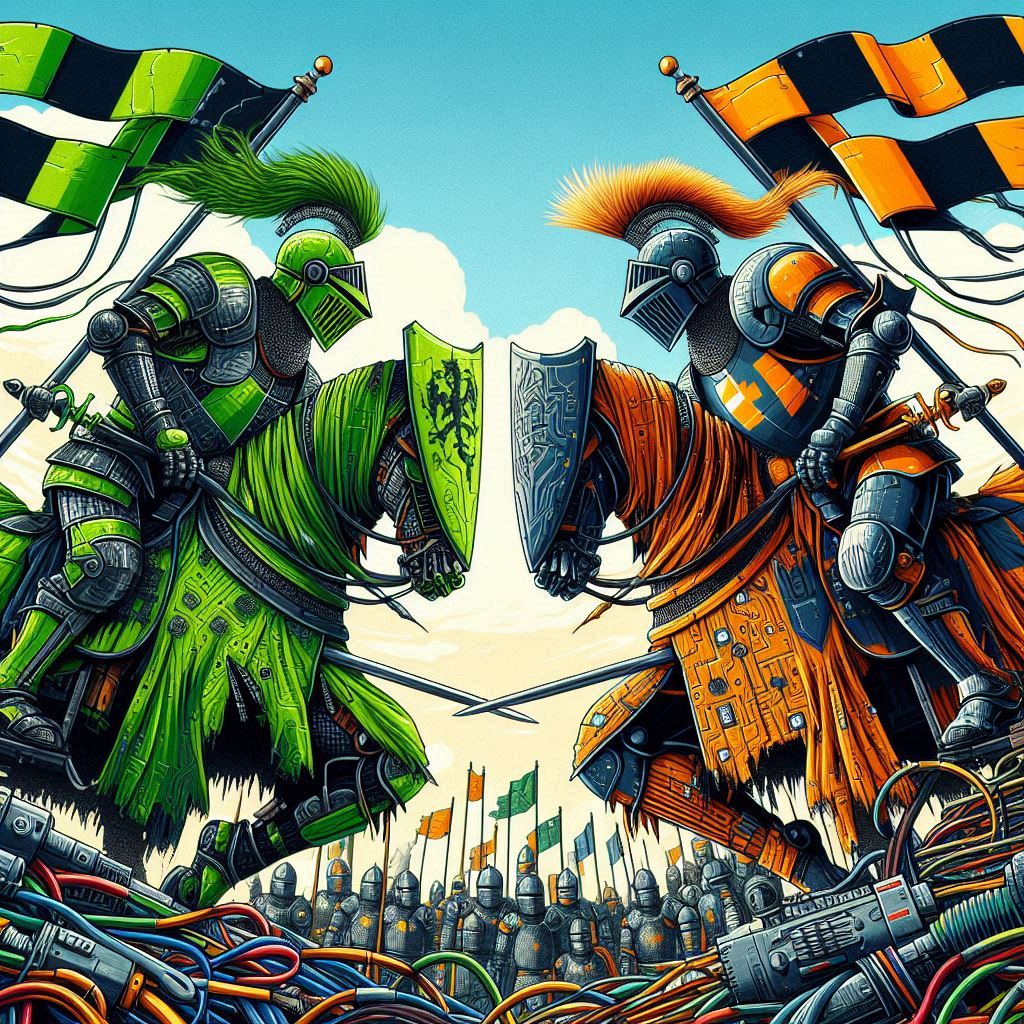The big news of the week was the Computex trade show in Taiwan. The event came with the usual slew of press releases, keynotes and of course the continued rise of Nvidia CEO Jensen’s Huang rockstar status, which we are now apparently calling Jensanity (Someone should do a study of the timespan between celebrity status for a CEO and the popping of the surrounding bubble. It cannot be a good sign.)
There has been a lot of good coverage of the show, but Ben Thompson’s piece stood out to us. Thompson takes the view that Huang’s Computex keynote address expresses the optimal strategy for the company – a focus on designing the best chips and supplying the infrastructure for the AI boom revolution momentum. This stands in contrast to past keynotes where Huang seemed to emphasize the company’s software and cloud ambitions.
This strikes us a highly sensible assessment. The company has an obvious core competency in designing these chips and a massive head start on one of the biggest shifts in compute spending in memory. Focusing on that is almost certainly the smart move at this point. Going too far down the software path risks distractions, lost focus and the threat of ending up in competition with their largest customers. Chips are the best strategy. Totally makes sense.
That being said, we have to wonder if it is not already too late for the company to hew to this path. We are over four years into Nvidia’s rise to prominence in data center silicon, and well over a year into the post-ChatGPT massive surge in Nvidia’s revenue. They have already made it clear they have a lot of software in the works, and that software in the form of CUDA was a big part of their competitive advantage. Those big customers, the hyperscalers, are all keenly aware of their dependence on Nvidia and the fact that they cannot get nearly as many Nvidia GPUs as they want. Put simply the power dynamic has already shifted.
We have been listening to a lot of history podcasts lately, and one clear lesson from those is that good intentions do not matter when their is power at stake. Ludwig of Bavaria and Henry of Austria may have been raised together, best friends for all their lives, but at some point their two kingdoms went to war and they had to try to kill each other. The war for AI has already started and even if Nvidia “just” wanted to be the leading AI semiconductor vendor, their range of options is now limited by the state of the market and the perception of them held by the other combatants.
There are signs of this already playing out. The hypserscalers are all designing their own AI accelerators, and they all say (implicitly, but often explicitly) that part of their motivation for doing this is to reduce their reliance on Nvidia. The company may now try to tell everyone they are actually good faith silicon vendors working crazy hours to make sure everyone gets the chips they want. That their software is not-competitive to the hyperscalers, just a nice added feature of their hardware. They may try this, but it is unlikely the hyperscalers will believe them, paranoia is a watchword in the Valley. And even if the company were sincere in this message, they cannot actually deliver what the big customers want. Nvidia does not have enough chips to meet demand, everyone is on allocation. That means Nvidia holds the power in all negotiations, whether they want it or not.
And of course, they do want that power. They would rather sell complete systems with complete boards, fully-marked up memory and pricey networking. How are they actually deciding who gets allocated how many chips? They would have to exert superhuman amounts of self-discipline to not favor the customers who pay Nvidia more, and that level of discipline is probably in conflict with their duty to shareholders.
The hyperscalers are also pushing very hard to dilute Nvidia’s software barriers to entry. It is not clear they can do this, but they likely see it as critical that they push as hard as they can. And how will Nvidia respond to this? They could just announce they are exiting software, but that would be nearly suicidal and would not really accomplish much. Instead, they are going to have to move in the opposite direction and double down on their investment in software to shore up their differentiation. Which of course just reinforces the cycle.
Throughout this, good intentions are at best meaningless. The power dynamics at play leave the company with a limited set of options for moving forward. To be clear, they have a lot of great options, their position is immensely strong, but we do not think they can move back to being ‘just’ a semiconductor supplier. And it is not clear to us that they even want to do that.




Leave a Reply